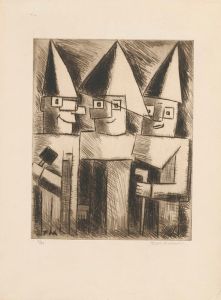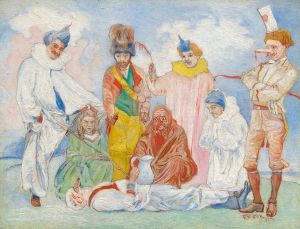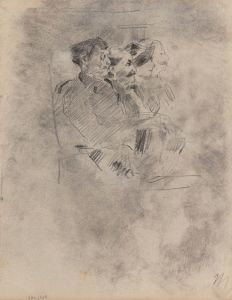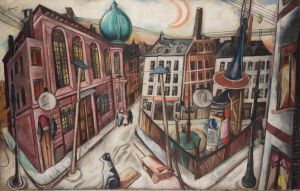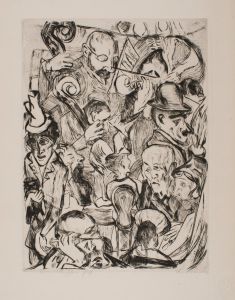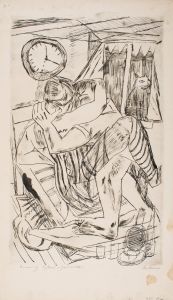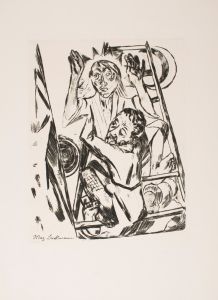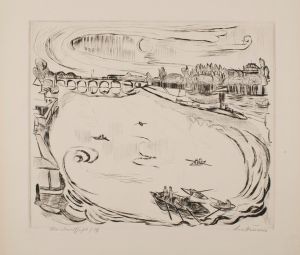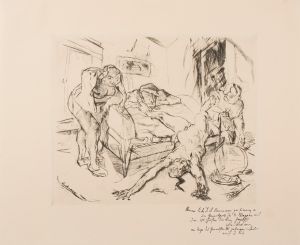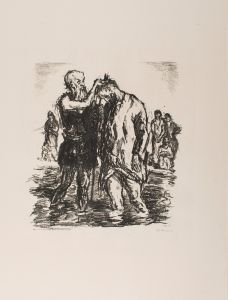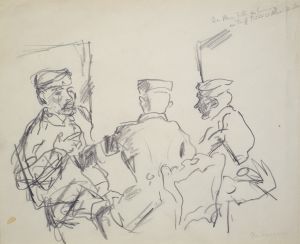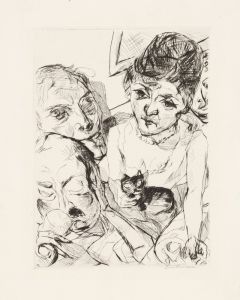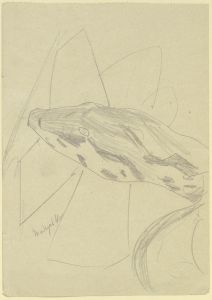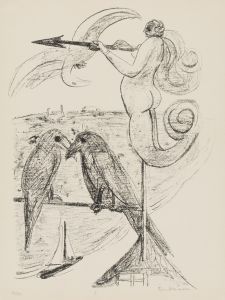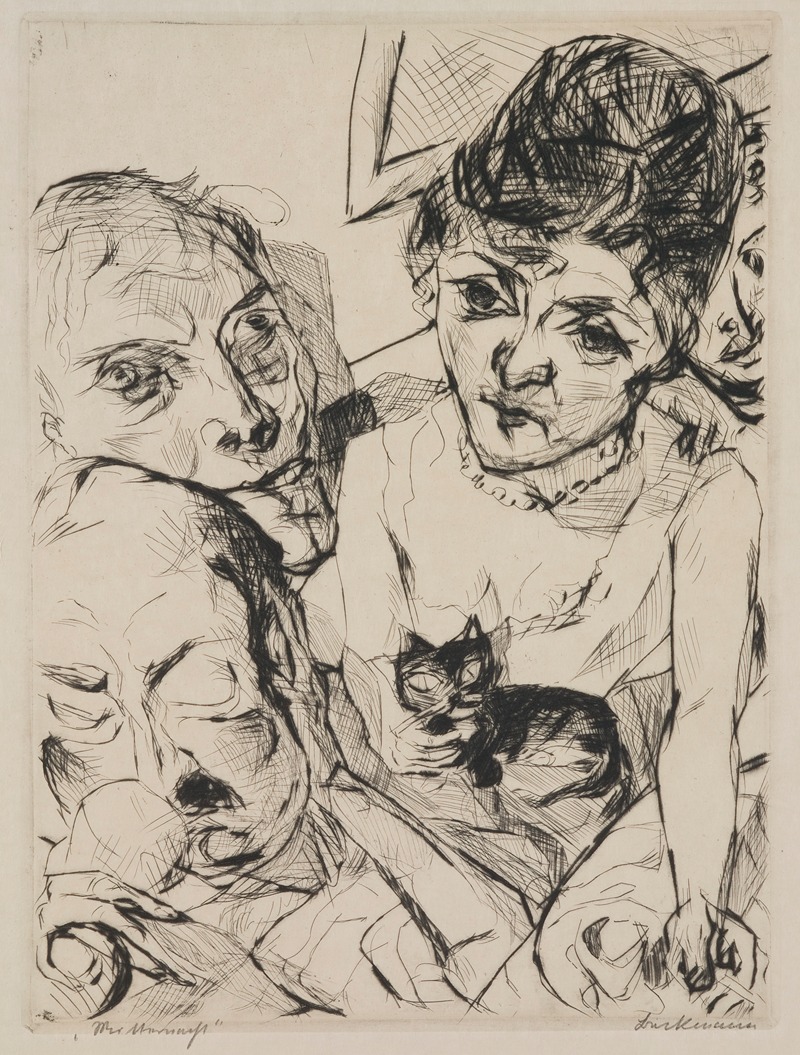
Evening , plate 10 from the portfolio ‘Faces’
A hand-painted replica of Max Beckmann’s masterpiece Evening , plate 10 from the portfolio ‘Faces’, meticulously crafted by professional artists to capture the true essence of the original. Each piece is created with museum-quality canvas and rare mineral pigments, carefully painted by experienced artists with delicate brushstrokes and rich, layered colors to perfectly recreate the texture of the original artwork. Unlike machine-printed reproductions, this hand-painted version brings the painting to life, infused with the artist’s emotions and skill in every stroke. Whether for personal collection or home decoration, it instantly elevates the artistic atmosphere of any space.
Max Beckmann, a prominent German painter and printmaker, created "Evening," plate 10 from the portfolio titled "Faces," during a period marked by significant personal and political upheaval. Beckmann, born in 1884 in Leipzig, Germany, is often associated with the New Objectivity movement, which emerged in the Weimar Republic as a reaction against the emotional intensity of Expressionism. His works are known for their complex symbolism, bold lines, and exploration of the human condition.
The portfolio "Faces" was completed in 1918, a pivotal year in Beckmann's life and in world history. This was the year that marked the end of World War I, a conflict that had a profound impact on Beckmann. He served as a medical orderly during the war, an experience that deeply influenced his artistic vision and themes. The trauma and chaos of the war years are often reflected in his work, which frequently explores themes of existential anxiety and the fragility of human life.
"Evening," as part of the "Faces" portfolio, is a black and white lithograph that exemplifies Beckmann's mature style. The portfolio consists of a series of prints that depict various characters and scenes, each imbued with a sense of introspection and psychological depth. Beckmann's use of stark contrasts and dramatic compositions in "Evening" highlights his interest in the interplay between light and shadow, both literally and metaphorically.
The subject matter of "Evening" is typical of Beckmann's work during this period, focusing on the human figure and its emotional states. His figures are often portrayed in confined spaces, suggesting a sense of entrapment or isolation. This can be seen as a reflection of the broader societal disillusionment following the war. Beckmann's characters are frequently depicted with exaggerated features and expressions, emphasizing their inner turmoil and the complexities of their personalities.
Beckmann's work is characterized by its narrative quality, and "Evening" is no exception. The print invites viewers to contemplate the story behind the image, encouraging an engagement with the psychological and emotional dimensions of the scene. The ambiguity and open-ended nature of Beckmann's compositions allow for multiple interpretations, making his work both challenging and compelling.
Throughout his career, Beckmann remained committed to exploring the human experience in all its facets. His work is often seen as a bridge between the traditional and the modern, combining elements of classical art with a distinctly modern sensibility. Beckmann's influence can be seen in the work of later artists who similarly grappled with themes of identity, alienation, and the human condition.
"Evening," like many of Beckmann's works, continues to resonate with contemporary audiences, offering a poignant reflection on the complexities of life and the enduring power of art to capture the essence of the human spirit.





